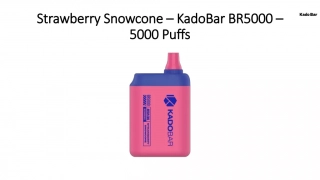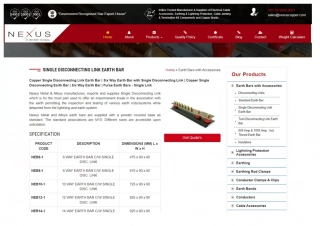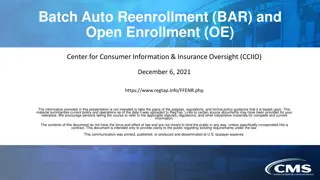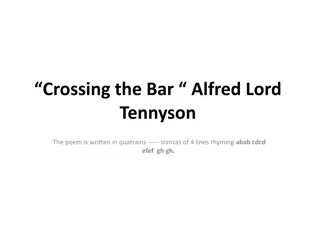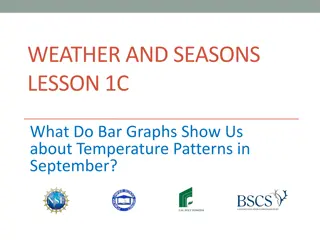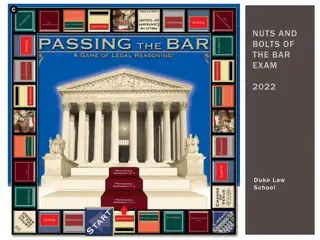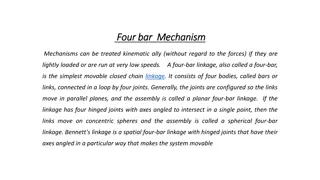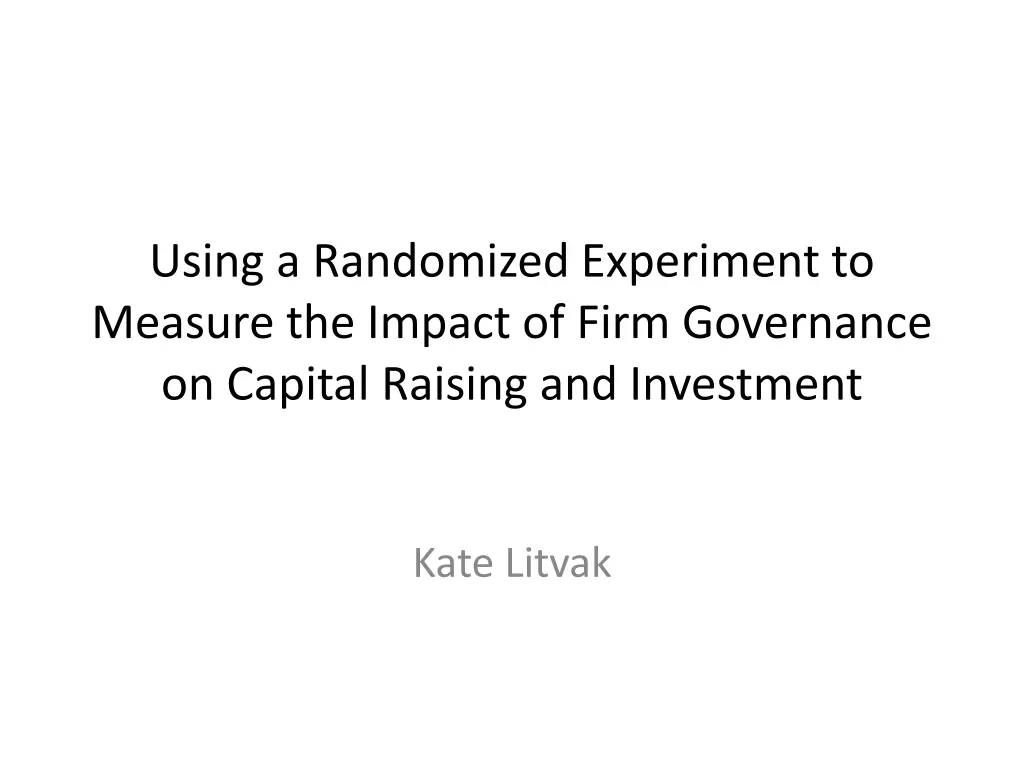
Impact of Firm Governance on Capital Raising & Investment: Randomized Experiment by Kate Litvak
Explore a randomized experiment conducted by Kate Litvak to measure the impact of firm governance on capital raising and investment. This study delves into the hierarchy of identification methods, the SEC's trial details, and prior studies on the uptick rule, revealing insights into market dynamics and regulations.
Download Presentation

Please find below an Image/Link to download the presentation.
The content on the website is provided AS IS for your information and personal use only. It may not be sold, licensed, or shared on other websites without obtaining consent from the author. If you encounter any issues during the download, it is possible that the publisher has removed the file from their server.
You are allowed to download the files provided on this website for personal or commercial use, subject to the condition that they are used lawfully. All files are the property of their respective owners.
The content on the website is provided AS IS for your information and personal use only. It may not be sold, licensed, or shared on other websites without obtaining consent from the author.
E N D
Presentation Transcript
Using a Randomized Experiment to Measure the Impact of Firm Governance on Capital Raising and Investment Kate Litvak
Map of This Talk Original Goal Here: Do Precisely Nothing Not really Identification Idea Theory Unexpected Difficulties and Solutions Results
Hierarchy of Identification Cross-Sectional Regs Firm Fixed Effects Exogenous Shock Legal Change Natural Disaster Randomized Trial Gold Standard
Randomized Trial Here Conducted by the SEC in 2005-2007 Suspends Existing Restrictions on Short Selling Up to July 2007: Rule 10a-1 from 1938 Ok to Sell Short if Price Is Above immediately preceding sale, or At last sale price if it was higher than last diff price Goal: Prevent Downward Price Spirals Restrictions Supported by Firm Managers Claim: Short Sellers Opportunistic, Drive Down Prices
Trial Details True Randomized Experiment Not Just Natural Experiment Based on Size etc. Take All Russell 3000 Firms (High Liquidity) Rank by Trading Volume Pick Every Third Pilot Firms Selection Period: June 2003-June 2004 Suspends Uptick Rule for Pilot Firms The Rest Control Group Trial Period May 2, 2005 to July 3, 2007
Prior/Concurrent Studies on Uptick Rule SEC Office of Economic Analysis (2007) Effect of rule on volume of short sales, option trading, prices, liquidity, volatility Diether, Lee, Werner (2006) Effect of rule on spread, volatility, short sale volume Alexander and Peterson (2006) Volume, Volatility Around Announcement and Initiation Date of Pilot Program Bai (2007) Effect on Price, Volatility, Volume During Mkt Stress Grullon et al. (2012) Increase in Short Selling Causes Prices to Fall Small Firms Reduce Equity Issues
Prior Studies on Uptick Rule No impact on Daily Return Volatility Liquidity Magnitude and Speed of Price Decline When Stocks Subject to Downward Pressure Caused by Earnings Shocks Options Trading Weak Evidence: Overpricing Caused by Selling Restrictions So, SEC Concluded Rule Useless Repealed it in June 2007 Now, Adopted Different, Narrower Rule No Trial There
Broad Research Question Interaction of Internal and External Governance Examples of Internal Governance Boards, Procedures, S/h Voting Rules, Fiduciary Duties Standards Examples of External Governance Share Price Mkt for Corporate Control Product Mkt Competition
Research Design Measures of Internal Governance + External Governance Outcome We Want: Exogenous Shock to Some Form of Governance Then, See if Outcome Affected Maybe Conditional of Internal Gov ce Other Papers: Shocks to Internal Governance Sarbanes-Oxley, Korean Corp Gov ce Reform, DE Legal Rules This Paper: Shock to External Governance
Identification Exogenous Shock to External Gov ce Through Randomized Trial
Hypothesis #1 Short Selling Permitted Negative Opinions Incorporated into Stock Prices Prices More Accurate Investors More Willing to Invest Cost of Capital Down Capital Raising Up Prediction: Short Selling Permitted Capital Raising Up Theory: Lintner (1969), Miller (1977), Scheinkman and Xiong (2003), Gallmeyer and Hollifield (2006)
Hypothesis #2 Short Selling Permitted Manipulators Run Down Prices Panics Up Stock Prices Artificially Deflated Capital Raising Down Note: Gov ce Value of Short Selling Lower than Damage from Panics and Deflated Stock Prices Prediction: Short Selling Permitted Capital Raising Down
Bottom Line on Hypotheses Testing Governance Value of Short Selling
Research Design (1) Classic Diffs in Diffs for Randomized Trials Developed for Drug Trials Treated Firms Exempt from restriction on short-selling Control Firms Short-Selling Restricted Under Old Rule Compare: Outcomes of Treated Firms v. Outcomes of Control Firms During and Outside Test Period
Research Design (2) If Randomized Trial Perfectly Executed No Need for Regressions Except if Want to Know Cross-Sectional Effects But Not Perfectly Executed Here So, Need Some Extra Work Follow-Up I Will Re-Do Prior Studies on Price, Volatility, Volume etc
Summary of My Findings (1) Short Selling Causes: Increase in Equity Raising No Change in Debt Raising Increase in Capital Investment Increase in R&D Investment Increase in Dividend Payments
Summary of My Findings (2) What Kinds of Firms Most Responsive to Short Selling Effects? Worse Internal Governance Higher Prior Cash Flows
Summary of My Findings (3) What Does Not Predict Response? Prior Financial Constraint Relevant for Cash Flow Investment Sensitivity Literature Evidence Consistent with KZ, not FHP Capital Raising Made Cheaper for Random Firms Treated Firms generally responded by raising more $ And invested more But more fin constrained firms not different from rest Firs with higher pre-treatment cash flow investment sensitivity not different from rest
Data: Intended Randomization Firm Characteristic Treated Group, Mean 580 2958.95 Intended Control T-stat Treated v. Intended Control Number of Firms Asset Size Cash and Cash Equivalents 19.99 1168 3245.28 25.15 0.67 0.57 Capital Expenditures 152.80 141.14 0.59 Common Shares Issued 110.78 126.56 1.15 Long-Term Debt Total Liabilities Total Dividends Paid EBITDA Number of Employees 694.13 1772.77 41.18 396.77 10.26 769.53 2025.30 40.27 388.97 11.31 0.74 0.89 0.12 0.16 0.80 PPE Total Sales Growth R&D Expenditures Trading Volume, in $ 1829.85 267.31 54.87 6.10e+09 1835.20 295.38 84.15 6.17e+09 0.09 0.56 1.92 0.10
But There is Category B Created by SEC, Listed on their Page Not self-selection Principles of selection not reported Prior Papers Assumed: Inconsequential Rule for Them: Exempted From Uptick Rule from 4pm to 8pm So, Partially Treated! Check: Random?
Data: Actual Assignment (Compliers) Firm Characteristic Treated Group, Mean 580 2958.95 True Control Group T-stat Treated v. True Control Number of Firms Asset Size Cash and Cash Equivalents 19.99 781 719.68 5.47 7.36 2.19 Capital Expenditures 152.80 37.30 7.19 Common Shares Issued 110.78 43.42 7.29 Long-Term Debt Total Liabilities Total Dividends Paid EBITDA Number of Employees 694.13 1772.77 41.18 396.77 10.26 204.83 445.25 5.37 79.80 3.90 6.25 6.82 6.36 8.38 6.47 PPE Total Sales Growth R&D Expenditures Trading Volume, in $ 1829.85 267.31 54.87 6.10e+09 460.66 261.55 25.21 1.67e+09 7.32 0.11 3.52 8.78
Data: Actual Assignment (Non-Compliers) Firm Characteristic Treated Group, Mean 580 2958.95 Non-Compliers (Partially Treated) 387 8303.04 64.62 T-stat Treated v. Partially Control Number of Firms Asset Size Cash and Cash Equivalents 19.99 15.84 5.30 Capital Expenditures 152.80 349.37 14.99 Common Shares Issued 110.78 293.06 15.94 Long-Term Debt Total Liabilities Total Dividends Paid EBITDA Number of Employees 694.13 1772.77 41.18 396.77 10.26 1897.49 5185.41 110.18 1009.73 26.07 14.47 14.39 12.04 17.64 14.90 PPE Total Sales Growth R&D Expenditures Trading Volume, in $ 1829.85 267.31 54.87 6.10e+09 4646.14 362.32 214.59 1.51e+10 14.82 1.56 9.74 18.49
Kernel Density of Firm Asset Size for Treated v. Combination of Control and Partially-Treated Firms (Intended by Randomization) Kernel density estimate .0008 size, treated, as of 2004 size, intended control, as of 2004 .0006 Density .0004 .0002 0 0 2000 4000 6000 8000 10000 at, Winsorized fraction .01 kernel = epanechnikov, bandwidth = 171.1019
Kernel Density of Firm Asset Size for Partially-Treated v. Control Firms (Compliers v. Noncompliers In Control Group) Kernel density estimate .0015 size, partially treated, as of 2004 size, control, as of 2004 .001 Density .0005 0 0 2000 4000 6000 8000 10000 at, Winsorized fraction .01 kernel = epanechnikov, bandwidth = 581.0507
So, Problem Non-Randomized Non-Compliance Cannot Compare Treated v. Intended Controls Third of controls are partially treated Cannot Compare Treated v. Real Controls Real controls not randomly chosen among intended controls
Solutions Developed by Statisticians for Randomized Trials How to deal with non-compliers Inverse Propensity Weighting Alone or with trimming of ranges without common support Unbiased with heterogenous treatment effects But inefficient Inverse Propensity Tilting Creates exact covariate balance Biased with heterogenous treatment effects Unbiased with homogenous treatment effects Efficient
Inverse propensity score reweighting Propensity score (ptreated) is balancing score (Rosenbaum & Rubin, 1983) Same propensity same expected covariates Unbiased estimate with inverse propensity weights (IPW): = 1 1 y y N N i w i w * * i i ATE p p (1 ) N N 1 p 1 : j w = = : 1 : 0 i i i i p (1 ) = = 1 : 0 j w j j j j
Inverse propensity tilt reweighting Short Version: Multiply [standard weights} * p * (1-p) Exact Covariate Balance Biased Estimate if Heterogenous Treatment Effects
Kernel Density of Propensity to be Treated for Treated v. Control Firms Kernel density estimate 2.5 p treated p control 2 1.5 Density 1 .5 0 0 .2 .4 .6 .8 1 Pr(onlyaandcontrolgroup) kernel = epanechnikov, bandwidth = 0.0408
Kernel Density of Propensity to be Treated for Partially-Treated v. Control Firms Kernel density estimate 8 p partly treated p control 6 Density 4 2 0 0 .2 .4 .6 .8 1 Pr(onlybandcontrolgroup) kernel = epanechnikov, bandwidth = 0.0879
Tests (1) Use Inverse Prop Tilting Weighting to Produce Exact Covariate Balance Ask: Do Treated Firms Raise More Capital During Treatment? Answer: Yes for equity No for debt
Panel, Inverse Prop Tilting Equity Issuance 0.0285*** (3.33) -0.0911*** (-5.232) -0.0877*** (-16.27) 0.0250*** (15.36) 0.0417*** (7.28) 0.0107*** (3.15) 0.252*** (4.68) firm, year firm 8,372 0.223 948 Debt Issuance -0.0109 (-1.229) 0.013 (0.85) 0.0200*** (3.80) -0.00488*** (-3.331) -0.0126** (-2.233) 0.000555 (0.16) -0.00583 (-0.122) firm, year firm 8,163 0.016 948 Treatment Period * Treated Firm Treatment Period Ln Assets Ln Cash Holdings Ln Closing Price Ln Trading Volume Constant Fixed Effects Clusters Observations R-sq Firms
Tests (2) Use Inverse Prop Tilting Weighting to Produce Exact Covariate Balance Ask: Do Treated Firms Invest More During Treatment? Answer: Yes for CapX Yes for R&D Also Increase Dividends
Panel, Inverse Prop Tilting Capital Expenditur R&D Expenditures Dividend Payments 23.23*** 26.27*** 15.37*** Treatment Period * Treated Firm (3.79) 9.247 (0.61) 22.21*** (4.63) -0.427 (-0.354) -10.08** (-2.190) 9.523*** (3.56) -241.3*** (-5.306) firm, year firm 8,451 0.069 948 (2.92) -14.09** (-2.355) 30.99*** (3.89) 0.255 (0.58) -13.68*** (-2.942) 1.689 (0.73) -131.7*** (-3.307) firm, year firm 7,755 0.127 939 (3.69) -18.90*** (-3.116) -1.312 (-0.604) 0.654 (1.27) -0.192 (-0.109) 1.566 (1.59) 17.67 (0.98) firm, year firm 8,500 0.048 947 Treatment Period Ln Assets Ln Cash Holdings Ln Closing Price Ln Trading Volume Constant Fixed Effects Clusters Observations R-sq Firms
Tests (3) Use Inverse Prop Matching with Trimming Covariate Balance not Exact But not Biased when Heterogenous Treatment Effects Censored, Uncensored, and No Weighting Ask: Do Treated Firms Raise More Equity During Treatment? Answer: Yes for equity
Panel, Inverse Propensity Matching Equity Issuance With weights, Not Censored 0.0184*** (3.05) -0.0759*** (-5.977) -0.0800*** (-17.77) 0.0186*** (16.47) 0.0317*** (6.97) 0.0150*** (5.59) 0.163*** (3.90) firm, year firm 11,346 0.207 1,255 With weights, Censored 0.0144** No Weights, Not Censored 0.0288*** Treat Period * Treated Firm (2.11) -0.0266*** (-3.523) -0.0887*** (-16.87) 0.0208*** (15.78) 0.0400*** (7.36) 0.0112*** (3.64) 0.211*** (3.83) firm, year firm 9,563 0.24 1,231 (4.43) -0.0367*** (-4.854) -0.0844*** (-19.25) 0.0209*** (18.10) 0.0347*** (8.11) 0.0155*** (6.08) 0.115** (2.48) firm, year firm 12,316 0.21 1,395 Treatment Period Ln Assets Ln Cash Holdings Ln Closing Price Ln Trading Volume Constant Fixed Effects Clusters Observations R-squared Number of Firms
Tests (4) Use Inverse Prop Matching with Trimming Covariate Balance not Exact But not Biased when Heterogenous Treatment Effects Censored, Uncensored, and No Weighting Ask: Do Treated Firms Raise More Debt During Treatment? Answer: No for debt
Panel, Inverse Propensity Matching Debt Issuance With weights, Censored -0.0042 (-0.450) -0.0285* (-1.876) 0.0317*** (5.78) -0.00438*** (-3.045) -0.00584 (-1.084) -0.00483 (-1.400) 0.0448 (0.95) firm, year With weights, Not Censored -0.00688 (-0.797) 0.00459 No Weights, Not Censored Treat Period * Treated Firm -0.0102 (-1.294) -0.00042 (-0.0414) 0.0213*** (5.10) -0.00401*** (-3.306) -0.00453 (-1.006) -0.00272 (-0.986) 0.0371 (0.83) firm, year firm 12,041 0.013 1,396 Treatment Period (0.33) 0.0217*** (4.69) -0.00418*** (-3.093) -0.00369 (-0.719) -0.00266 (-0.842) 0.0325 (0.74) firm, year firm 11,008 0.014 1,255 Ln Assets Ln Cash Holdings Ln Closing Price Ln Trading Volume Constant Fixed Effects Clusters Observations R-squared Number of Firms firm 9,185 0.017 1,231
Tests (4a) Cross-Sectional Results Ask: What Predicts Whether Treated Firm Will Raise Capital During Treatment? Possible Candidates: Pre-Treatment Financial Constraint Use Inverse Prop Matching with Trimming
Tests (4b) Intuition: Firm Is Financially Constrained Pre-Treatment Randomly Given Chance to Raise More Capital It should take it! Ask: Do Pre-Treatment Financial Constraints Cause Capital Raising During Treatment? Fin Constraint = Dividends/Net Income Use Inverse Prop Matching with Trimming Answer: No Very Robust In All Specifications Panel, x-section Linear and Categorical Measures of Fin Constraint With different weighting, matching, etc.
Impact of Prior Fin Constraint on Equity Raising X-Section, Before-After Tests EquityRaised /PPENT yes 0.0121 (0.37) -0.00956 (-0.562) -0.0167 (-1.097) EquityRaised /PPENT yes EquityRaised /PPENT yes Inverse prop match weighted and trimmed Fin Constraint A in 2004 * Treated Firm Fin Constraint A in 2004 Treated Firm -0.0196 (-1.334) 0.00909 (0.25) -0.00856 (-0.336) 0.00974 (1.05) Fin Constraint B in 2004 * Treated Firm Fin Constraint B in 2004 Fin Constraint C in 2004 * Treated Firm -0.0419 (-0.853) 0.0256 (0.63) Fin Constraint C in 2004 Assets, Cash Holdings, Closing Price, Trading Volume Constant Yes Yes Yes 0.0125 (0.12) 537 0.059 0.0421 (0.43) 529 0.062 0.0211 (0.27) 32 0.37 Observations R-squared
Impact of Prior Fin Constraint on Equity Raising Panel, Inverse Propensity Matching and Trimming EquityRaised /PPENT DebtRaised /PPENT Financial Constraint A * Treatment Group Financial Constraint A (0.00) (-0.127) 0.00 (0.08) (0.02) (-1.019) 0.00 (0.22) (0.00) (-0.202) (0.00) (-0.472) Treatment Group (0.02) (-1.019) (0.00) (-0.127) 0.00 (0.08) 0.01 (1.05) (0.00) (-0.472) 0.00 (0.22) (0.00) (-0.202) 0.01 (0.52) Financial Constraint B * Treatment Group Financial Constraint B Financial Constraint C * Treatment Group (0.04) (-0.853) 0.03 (0.63) 0.02 (0.27) (0.05) (-0.633) 0.03 (0.52) 0.01 (0.09) Financial Constraint C Constant 0.01 (0.10) 0.01 (0.10) 0.01 (1.05) 0.01 (1.05) Assets, Cash Holdings, Closing Price, Trading Volume Observations R-squared yes yes yes 32.00 0.37 yes yes yes 27.00 0.11 537.00 0.06 537.00 0.06 490.00 0.01 490.00 0.01
More Robustness Same results with categorical measures of constraints
Tests (5a) Use Cash Flow Investment Sensitivity as Proxy for Financial Constraint Theory: Firm Cannot Raise Outside Capital Has to Rely on Internal Cash Flows Investment Correlated with Cash Flows
Tests (5b) Replicate Prior Results in FHP Ask: Does Pre-Treatment Investment-Cash Flow Sensitivity Predict Pre-Treatment Financial Constraint? Fin Constraint = Dividends/Net Income No Treatment, Just Check Panel Use Inverse Prop Matching with Trimming Answer: Yes Higher Fin Constraint More Cash Flow Investment Sensitivity
Correlation: Fin Constraint versus Cash Flow Investment Sensitivity (No Treatment) Panel, Inverse Prop Score Weighted and Trimmed Cash Flow Investment Sensitivity Cash Flow Investment Sensitivity Cash Flow Investment Sensitivity Financial Constraint Group 1 0.102*** (9.63) Financial Constraint Group 2 -0.0362* (-1.872) Financial Constraint Group 3 -0.109*** (-9.312) 0.309*** (56.02) Constant 0.213*** (23.96) 0.288*** (54.28) Inverse prop match weighted and trimmed yes yes yes Obs R-Squared 863 0.097 863 0.004 863 0.091
Tests (5c) Ask: Does Pre-Treatment Investment-Cash Flow Sensitivity Cause Capital Raising During Treatment? Firms Randomly Offered Easy Ways to Raise Capital Do High-Sensitivity Firms Raise More? Use Inverse Prop Matching with Trimming Answer: No
Impact of Prior Investment Cash Flow Sensitivity on Equity Raising; X-Section, Before-After Tests Equity Raising -0.106 (-1.180) Debt Raising -0.0204* (-1.649) Equity Raising -0.109 (-1.208) 0.00517 (0.29) 0.0215 (0.77) -0.0383 (-0.558) 0.0154 (0.53) Debt Raising -0.0204* (-1.651) -0.00099 (-0.412) 0.00127 (0.35) -0.00146 (-0.162) 0.00472 (1.19) Cash Flow Investment Sensitivity Pre-Tr * Treated Firm Fin Constraint Group 1 Fin Constraint Group 2 -0.0362 (-0.532) 0.0159 (0.54) -0.00192 (-0.216) 0.00486 (1.23) Cash Flow Investment Sensitivity Pre- Treatment Treated Firm Assets, Cash Holdings, Closing Price, Trading Volume Constant yes yes yes yes -0.0525 (-0.556) 0.00618 (0.49) -0.0581 (-0.612) 0.00599 (0.47) Inverse prop match weighted and trimmed Observations R-squared yes 486 0.052 yes 443 0.015 yes 486 0.053 yes 443 0.016
Tests (6) Ask: Doe Pre-Treatment Cash Flows Cause Capital Raising During Treatment? Use Inverse Prop Matching with Trimming Answer: Yes More Pre-Treatment Cash Flows More Capital Raising During Treatment All Adjusted for PPENT Opposite of Theories Using Cash Flow Investment Sensitivity as Proxy for Fin Constraint
Impact of Prior Cash Flows on Equity Raising X-Section, Before-After Tests EquityRaised /PPENT DebtRaised /PPENT 0.0258*** (9.80) -0.021 (-1.560) 0.0009*** (2.61) -0.00096 (-0.530) Cash Flows in 2004 * Treated Firm Treated Firm Assets, Cash Holdings, Closing Price, Trading Volume Constant Yes Yes 0.0618 (0.66) yes 537 0.203 0.0149 (1.18) yes 490 0.02 Inverse prop match weighted and trimmed Observations R-squared


